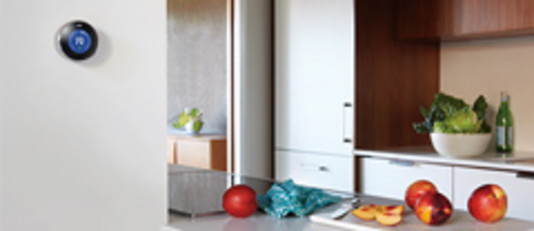It should come as no surprise that the future of home control comes from the same mind that created the iPod. Tony Fadell’s Nest is redefining home control, much like the iPod and the iPhone have redefined our connection to music, the internet and the connected world.
Nest came about as Fadell was tackling his dream home project and growing frustrated by the lack of home control options on the market that were smartphone app-ready. Balking in the face of $500 HVAC control that were clunky and unresponsive, he and software developer Matt Rogers cofounded Nest and released a digital thermostat of the same name in October of 2011.
With Nest’s second generation thermostat now on the market (it became available in October 2012), the company is getting some high praise for a device whose round design is a throwback (deliberate or not) to the analog thermostats of old.
Nest is light years ahead of any competition in the space. The simplified design features a knob you can turn to adjust the temperature and a display. That’s it. No up or down arrows. No “program” or “end of day” buttons to click and hold and fiddle with to set programs and schedules. That’s what the app is for.
That’s if you need to do any setting at all. The best part of Nest is that it “learns” the occupants’ schedules within a few days of installation and will start automatically adjusting the temperature accordingly. It can also detect when the house is empty, and will lower the temperature then, too.
Preliminary estimates suggest Nest has already save owners from using 225 million kilowatt-hours of energy — or $29 million in energy costs.
Not bad for a device that costs about $200.
Credit: MIT Technology Review




























